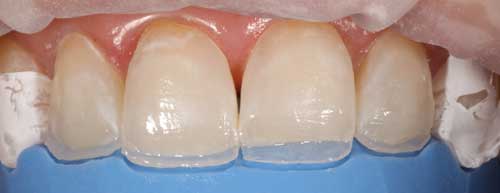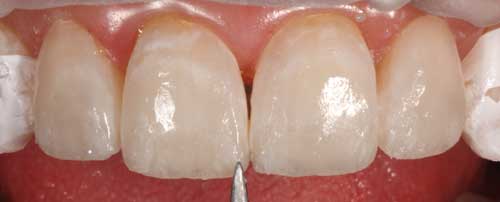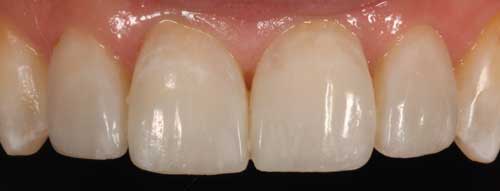Conservative Esthetic Technique With Direct Composite Bonding
Direct composite bonding in the anterior segment is a conservative and affordable treatment option for post-orthodontic smile enhancement.
Many adult patients are consulting with restorative dentists about conservative and affordable treatment options for post-orthodontic smile enhancement. As a result, restorative dentists are seeing direct composite bonding in the anterior segment as an increasingly popular treatment choice to improve the smiles of their patients — especially adults completing orthodontic therapy. Although it might be more challenging technically, direct composite bonding — when performed utilizing sound principles and the proper esthetic materials — allows for predictable results in a noninvasive, conservative and cost-effective manner.


TIPS FOR SUCCESS
Here are some tips for success. Guided with a silicon putty index fabricated from a diagnostic wax-up, a thin palatal shelf of composite is carefully placed and cured (Figure 1). This palatal shelf now acts as the backdrop for subsequent layers of composite to reproduce the natural internal colors and effects of tooth structure (Figure 2 and Figure 3). Proper finishing and polishing techniques can then be used to reveal a seamless restoration (Figure 4).


CONSERVE TOOTH STRUCTURE
As patient demands to conserve natural tooth structure increase, dentists should strive to become more knowledgeable and skilled with dental materials and techniques that will allow them to provide minimally invasive treatment. Although polychromatic layering of composite resins on anterior teeth is a challenging technique to learn, there are many hands-on courses designed to help clinicians understand the fundamental principles, materials and armamentarium. Armed with these tools, practitioners can focus on mastering the technique.
Adapted with permission, Journal of Cosmetic Dentistry. © 2022. American Academy of Cosmetic Dentistry. All Rights Reserved. 608-222-8583; AACD.com.
American Academy of Cosmetic Dentistry
800-543-9220
From Decisions in Dentistry. March 2022;8(3):24.


